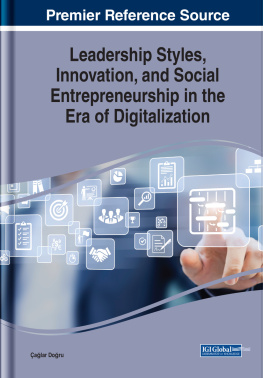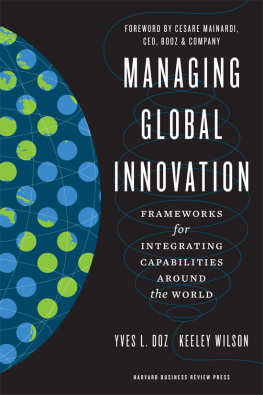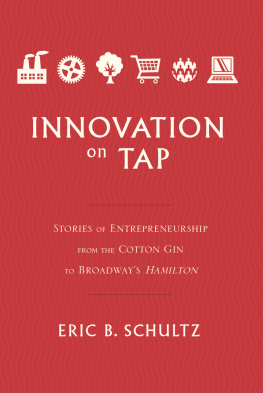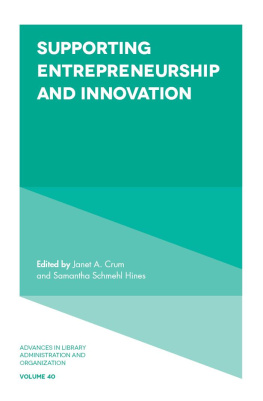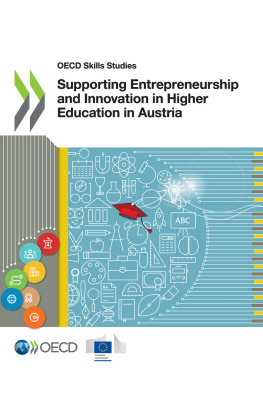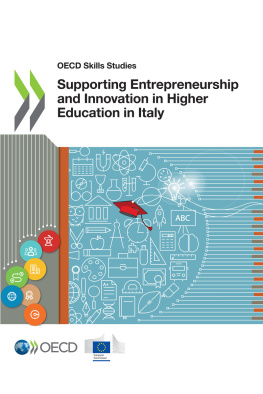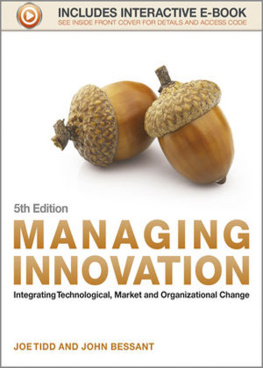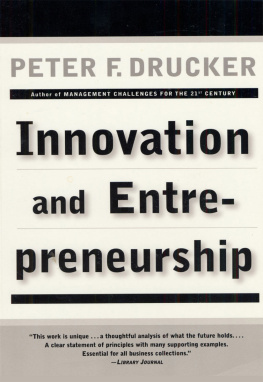To Baptiste, Maia, La and Louise, may their visions and plans come true
To Sylvie, constant source of inspiration.
Smart Innovation Set
coordinated by
Dimitri Uzunidis
Volume 32
Entrepreneurship and Innovation Education
Frameworks and Tools
Marcos Lima

First published 2020 in Great Britain and the United States by ISTE Ltd and John Wiley & Sons, Inc.
Apart from any fair dealing for the purposes of research or private study, or criticism or review, as permitted under the Copyright, Designs and Patents Act 1988, this publication may only be reproduced, stored or transmitted, in any form or by any means, with the prior permission in writing of the publishers, or in the case of reprographic reproduction in accordance with the terms and licenses issued by the CLA. Enquiries concerning reproduction outside these terms should be sent to the publishers at the undermentioned address:
ISTE Ltd
27-37 St Georges Road
London SW19 4EU
UK
www.iste.co.uk
John Wiley & Sons, Inc.
111 River Street
Hoboken, NJ 07030
USA
www.wiley.com
ISTE Ltd 2020
The rights of Marcos Lima to be identified as the author of this work have been asserted by him in accordance with the Copyright, Designs and Patents Act 1988.
Library of Congress Control Number: 2020945629
British Library Cataloguing-in-Publication Data
A CIP record for this book is available from the British Library
ISBN 978-1-78630-622-7
Introduction
This book is a compilation of practical insights for entrepreneurship and innovation (E&I) education based on tools, techniques and frameworks I have developed or adopted in my 20-year career as a teacher. As most of this experience took place in France, my country of adoption, the book is biased towards a European perspective of this phenomenon. However, its applicability is by no means restricted to this continent it could be adopted anywhere in the world.
Why write another book about entrepreneurship and innovation education? As mentioned above, this book is focused on creating a toolbox of frameworks for analyzing entrepreneurship and innovation problems and making decisions. Like my previous books (Lima and Fabiani 2014, 2016), this one assumes that the human brain cannot articulate more than three or four dimensions of a problem without the aid of what might be called checklists for thinking: frameworks (visual or otherwise) that help students think in terms of multiple variables affecting a problem. A typical example of a very valuable tool for thinking about business creation is the Business Model Canvas by Alexander Osterwalder and Yves Pigneur (2010). It suggests nine building blocks to think about how value is created, delivered and captured throughout the process. Before this framework was proposed, students of entrepreneurship and innovation tended to focus either on the value creation or on the value delivery process, or neglected to contemplate the relationship between the multiple dimensions involved. Thus, I strongly believe that one of the main roles of a business educator is to provide students with a toolbox for analyzing different problems using appropriate concepts, preferably in a visual manner. This manual presents an extensive list of frameworks and analytical models that can be used in different stages of entrepreneurship and innovation education. As Abraham Maslow is believed to have said, If all you have in your head is a hammer, every problem looks like a nail. Appendix 1 lists all the frameworks used in the book for easy reference.
Furthermore, the book introduces the notion of collaborative interactivity as a mediating principle to teaching and learning innovation and entrepreneurship. This principle is drawn from my PhD thesis (summarized in English in Lima et al. 2004). It explores how the constructivist approach of learning by doing can enhance knowledge acquisition through a combination of reflection, interaction and collaboration in a real-life setting. At the end of most chapters, a teaching and learning section illustrates how I have applied these principles in my own classes, often relying on collaborative technologies and cloud-based resources to enhance student interaction and engagement. discusses these principles and how they are applied in more depth.
Another important characteristic of this book is its emphasis on a more dynamic strategic view of business model innovation based on the principles of effectuation (Sarasvathy 2001) and human-centric innovation (such as Business Model Design, Customer Development, Design Thinking and Lean Startup). Many business schools in Europe still prompt entrepreneurship students to write long business plans, often based on dangerously flawed assumptions. We build a case in this book on how a more dynamic approach, based on business model testing and product or service prototyping, is a much more effective way of learning about real innovation opportunities. This does not mean that old-school business planning should be buried and forgotten. Indeed, the initial chapters of this book discuss typical business plan structures and the analytical tools involved in moving from vision to plan. Even though the effectuation approaches discussed in later chapters have proven to be more adapted to the dynamic nature of entrepreneurship and innovation projects, static business plans could be a good starting point to gain an overview of the initial strategic elements, which may help mature the entrepreneurs vision. The problem with these plans, we argue, is their tendency to become a static reference point for every decision beyond the initial stages of vision development. This danger must be avoided by applying dynamic effectuation approaches such as business modeling and design thinking.
I.1. A humble contribution to strengthening entrepreneurship and innovation in Europe
One of the challenges of writing a book about E&I in Europe is that there are multiple perspectives on a continent so culturally diverse. We do not have the pretension of presenting the definitive and comprehensive view of this phenomenon for the continent, but simply a perspective from my own experience of teaching European students for over a decade in France.
To illustrate how differently E&I are perceived in Europe, Dodd et al. (2013) analyzed positive and negative metaphors associated with entrepreneurs in a continent-wide survey. Whereas 46% of Greeks had a negative attitude towards entrepreneurs (blood-sucking leeches), in Ireland 82.3% saw them positively (bright and illuminating rainbows). presents these differences.
Different perceptions about entrepreneurs across Europe (adapted from Dodd et al. 2013)
| Positive images |
|---|
| % per country | Predominant metaphor |
| Ireland (82.3%) | Bright and illuminating rainbows |
| The Netherlands (73.8%) | Lubricating oil of economy |
| UK (72.5%) | Poets. They must invent new ideas and turn them into something profitable |
| Italy (70%) | The wings of freedom |
| Cyprus (65.5%) | A ship with a good captain. They know where the ship begins its voyage and where it docks. They have targets |
| Poland (49.3%) | Hunters they are persistent on their aspirations for a success |
| Greece (41%) |



